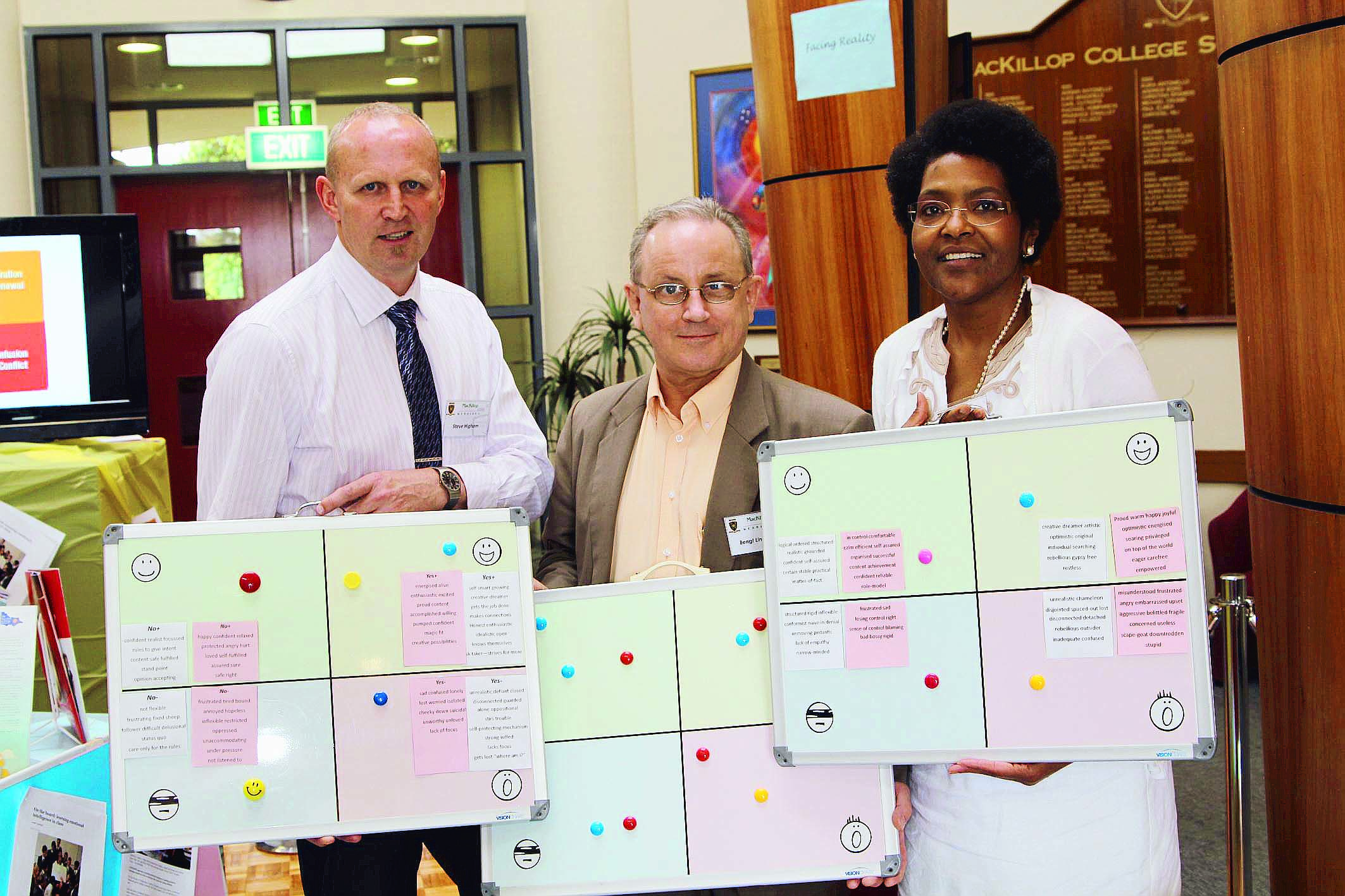
By NICOLE VALICEK
THE TITLE may be simple but the concept behind the Four Rooms of Change claims to be the answer to tackling schoolyard bullying and strengthening emotional intelligence.
MacKillop College in Werribee was among six Victoria schools to trial the Four Rooms of Change theory, which is based on a Swedish psychological theory, last year.
The theory suggests we constantly cycle through the four frames of mind or “rooms” – inspiration, contentment, denial and confusion.
In schools, teachers have introduced the concept by placing a whiteboard in classrooms and asked students to move personalised magnets between the categories as their emotions change.
The class members then discuss how and why their emotional state has changed.
Last week two Swedish guests from the company that introduced the program, Drusilla Copeland and Bengt Lindstrom, visited the school as part of a study tour to learn how the Four Rooms is going at MacKillop.
The visitors heard from year 7 and 8 students who have used the psychological method, some for two years, and were inspired by their stories.
“I’m very pleased and inspired by what is happening at this school with the Four Rooms,” Ms Copeland said.
“It’s helping the relationships between the students and the teachers… it has helped with learning numeracy and literacy.
“And then as an added bonus to that kids say it solves small conflicts that crop up, and it’s those things that if not resolved can lead to much more severe behaviours like bullying,” Ms Copeland said.
Year 7 student Isabella Mestre along with her peers spoke about their experience with the Four Rooms.
“It’s helped our class so much we use to have problems in our class but after our teacher introduced the boards to us it helped us grow more friendships with the teachers and students,” Miss Mestre said.
Classmate Claudia Gantner said it has helped to express her own emotions and to recognise others in her classroom
Ms Copeland said a profound moment was to hear the students talk about how they take their Four Room learning outside the school grounds and apply it to their everyday lives.
“It’s just amazing how it seems to help students solve their problems and get along better with each other,” Mr Lindstrom added.
Mr Lindstrom said he was impressed how the school has incorporated the Four Rooms across the whole school system.
“What’s special here in this school they have made it part of the philosophy, so one would expect that makes the results come faster, all the management seems to be involved in it, all the teachers seem to be involved in it, and that’s inspiring.”
Deputy principal Steve Higham said the school was so impressed, it had expanded the program to 25 classrooms to minimise bullying and improve their social and emotional learning.
“The one thing I really like about the program as an educator for 30 years we talk about kids need to take responsibility for their learning, using this program they take responsibility for the climate of a classroom,” Mr Higham said.

